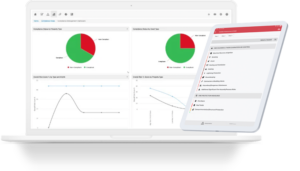23 Apr

The term Risk Assessment is used to describe an overall process or method where:
- Hazards and risks that have the potential to cause harm are identified.
- The risk associated with a hazard is evaluated and analysed.
- Appropriate methods to eliminate the hazard or control the risk when the threat cannot be eliminated are determined.
The purpose of a risk assessment is to look at your workplace or surroundings to identify situations, things and processes that may cause harm, in particular to people. Once you have identified the risk, you can analyse and evaluate how likely and severe the risk is. When you have made this determination, you can decide what measures should be put in place to effectively eliminate or control harm from occurring.
Why are risk assessments important?
Risk assessments are essential because they form an integral part of an occupational health and safety management plan. Risk assessment is a dynamic process to proactively manage your risks.
The implementation of a Risk Assessment helps to:
- Create awareness of potential hazards and risks
- Identify who is at risk (e.g., employees, visitors, cleaners, suppliers, contractors etc.)
- Determine whether or not a control program is required for the identified hazard
- Determine if existing control measures are adequate or if more should be put in place
- Consider the use of PPE (Personal Protective Equipment)
- Provide clear information
- Provide additional training for personnel
- Prevent the occurrence of unnecessary injuries or illnesses
- Prioritise hazards and their control measures
- Meet lawful requirements
The risk assessment process aims to evaluate hazards, remove them, or minimise the risk level by adding control measures, as appropriate. Ultimately, this process creates safer and healthier surroundings for everyone.
A risk assessment aims to answer the following questions:
- What could happen, and under what circumstances?
- What would the consequences be?
- How likely is it that the consequences might occur?
- Is the risk-controlled effectively, what further action is required?
When should a risk assessment be performed?
There could be many reasons why a risk assessment is needed; here are some:
- Before the introduction of new processes or activities.
- Before introducing changes to existing processes or activities, e.g., when products, machinery, tools, equipment change or new information concerning harm or hazard becomes available.
- Upon identification of a hazard.
What to consider when planning for a risk assessment?
As a general guide, you will need to determine the following:
- What your risk assessment scope will be: e.g., be specific about what is to be assessed, such as the lifetime of the product, the physical area where the work activity occurs, or the types of hazards.
- What resources are required: e.g., the team of individuals carrying out the assessment need to be trained, the types of information sources, etc.
- What type of risk analysis measures is to be utilised: e.g., how precise does the scale or parameters need to be to provide the most relevant evaluation.
- Who the stakeholders involved are: e.g., manager, supervisor, worker, worker representative, contractors, suppliers, members of the public etc.?
- What are the relevant legislative requirements that apply, as well as organisational policies and procedures?
Risk assessment template examples: 5 steps to all risk assessment templates.
When to share, communicate and inform on your risk assessment?
Simply completing the risk assessment is only half of the task; once risk assessments are completed, the findings must be recorded and shared with all employees throughout the company. Risk assessments should be accessible to employees at any time, as they detail crucial health and safety information that can be used to keep the workplace safe.
Risk assessments go some way to raise awareness of hazards or hazardous areas, but they can also help employees better understand the measures to use and precautions to protect themselves from harm and reduce risk.
A risk assessment details safety precautions that should be taken when working with dangerous equipment or materials. They outline the control equipment that should be used and how employees are expected to comply with health and safety policies.
Compliance and safety legislation
If a company’s compliance is questioned, risk assessments are often the first place a governing body will look for proof that an employer has assessed health and safety risks and put appropriate and adequate control measures in place.
Companies with more than five employees must carry out risk assessments and record the findings.
Risk assessments not only aid in the prevention of risk and the communication of health and safety information, but they also demonstrate compliance and reduce a companies’ legal liability.
Risk management with Risk Warden
Risk Management can be a lengthy and complicated process. The Risk Warden digital Risk Assessment process dramatically reduces time, effort, complexity and propensity for human error. Achieving a compliant, risk-managed environment has never been easier – no matter how big or small.
Sign up now – no credit card required – for your free Risk Warden account and experience just how easy it is to produce a professional Risk Assessment.
Legislation
The most important piece of European legislation relevant to risk assessment is the Framework Directive 89/391. This Directive is indeed a framework, with “general principles concerning the prevention of occupational risks… as well as general guidelines for the implementation of the said principles” (Art. 1.2.). It makes employers responsible for ensuring the safety and health of workers in every aspect related to work, and risk assessment is an integral aspect of this mandatory occupational safety and health management (OSHM).
According to the Directive, a risk assessment must be the starting point of a comprehensive OSHM process. It has a central role because it enables employers to put in place the measures that are necessary to protect the safety and health of their workers.
The Framework Directive has been transposed into national legislation. Member States, however, have the right to introduce more stringent provisions to protect their workers (for this reason you should check the specific legislation relating to risk assessment in your country).


